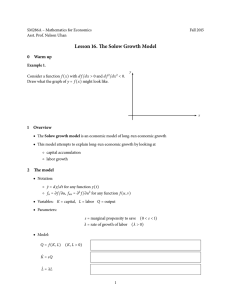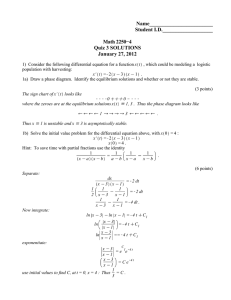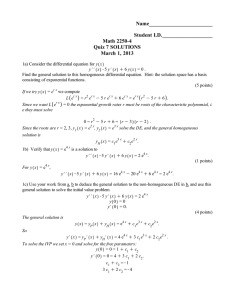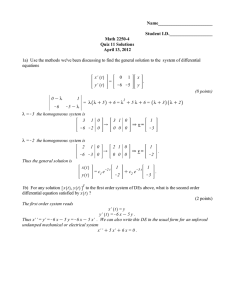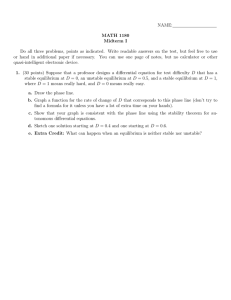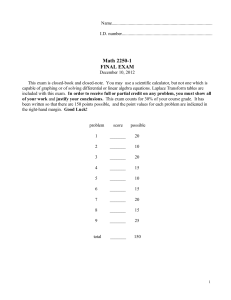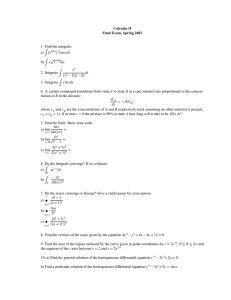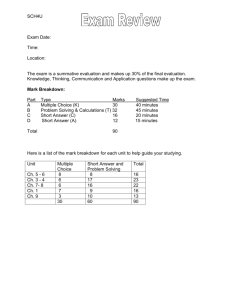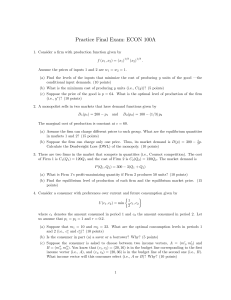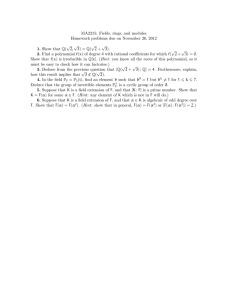So there is an equilibrium k = ¯k that is ●
advertisement
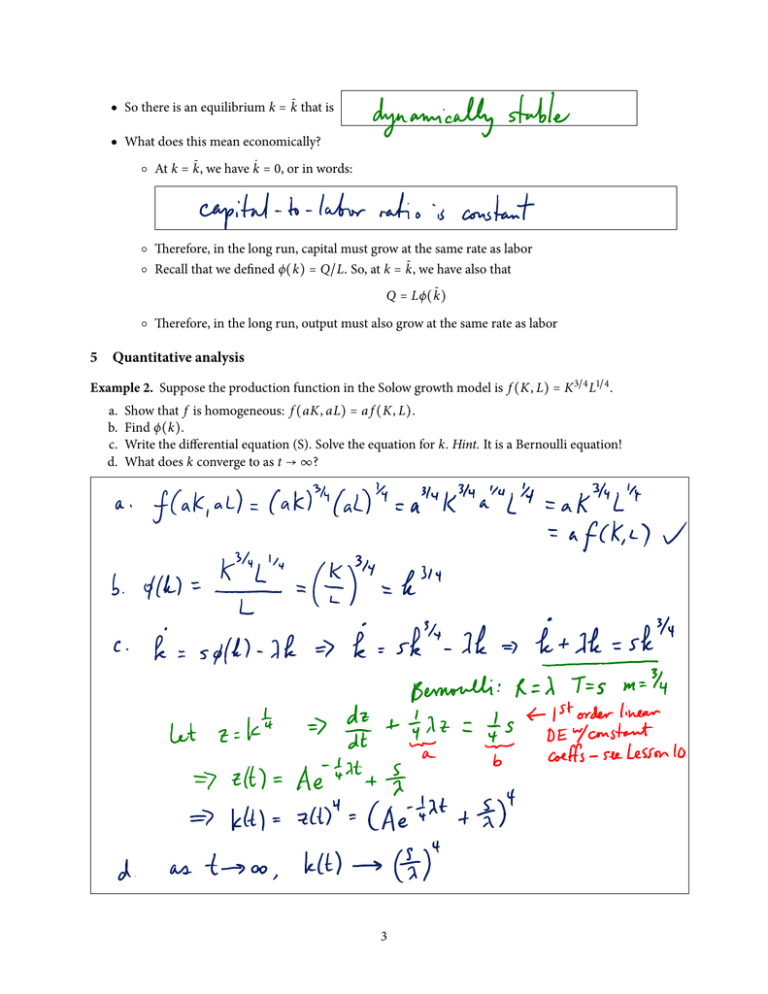
● So there is an equilibrium k = k¯ that is ● What does this mean economically? ¯ we have k˙ = 0, or in words: ○ At k = k, ○ Therefore, in the long run, capital must grow at the same rate as labor ¯ we have also that ○ Recall that we defined ϕ(k) = Q/L. So, at k = k, ¯ Q = Lϕ( k) ○ Therefore, in the long run, output must also grow at the same rate as labor 5 Quantitative analysis Example 2. Suppose the production function in the Solow growth model is f (K, L) = K 3/4 L1/4 . a. b. c. d. Show that f is homogeneous: f (aK, aL) = a f (K, L). Find ϕ(k). Write the differential equation (S). Solve the equation for k. Hint. It is a Bernoulli equation! What does k converge to as t → ∞? 3
